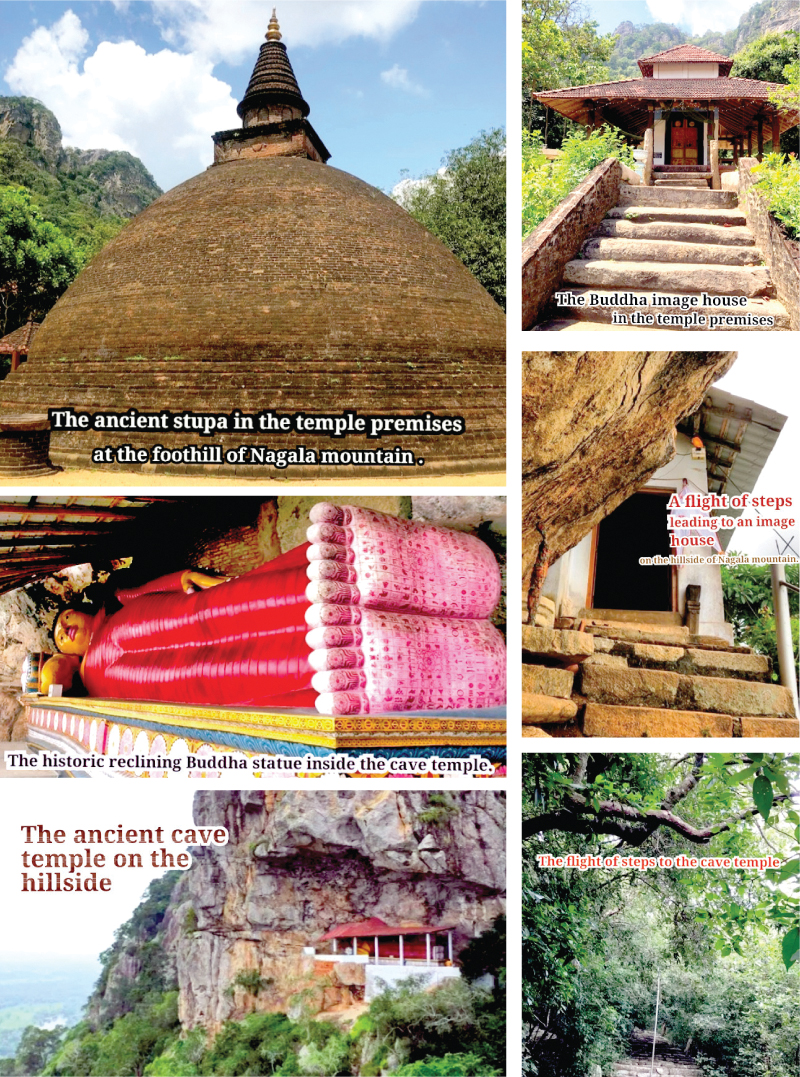The Sri Nagala Raja Maha Vihara is at the foothill of the Nagala mountain range at Nikawewa in the Polpithigama Divisional Secretariat Division in the Kurunegala district.
This Buddhist place of worship with the breathtaking rocky mountainous surroundings has a history dating back to the period of King Devanampiyatissa and is also woven around several historical stories.
With the advent of Arahat Mahinda Thera to Sri Lanka with the noble message of Theravada Buddhism during the reign of King Devanampiyatissa, there began a Buddhist religious and cultural renaissance with the sublime teachings of the Buddha beginning to heal the wounds of suffering people and drastically changing their lives ideologically and physically.
Buddhasasana
Arahat Mahinda Thera’s concern was to establish and propagate Buddhism in Sri Lanka. With his blessings, King Devanampiyatissa and his successors built Buddhist temples all over the island for the perpetuation of the Buddha Sasana. It is believed that King Devanampiyatissa built thousands of temples and the Sri Nagala Raja Maha Vihara was one of them with its location being out of the ordinary. A significant number of those temples was reserved for Arahat bhikkhus.
The Sri Nagala Raja Maha Vihara was handed over to Arahat Pussadeva Thera, who was a brother of king Saddhatissa’s queen. He had attained Arahatship in this holy place of worship. It is also said that about 65 bhikkhus from India had also come to this sacred place to receive education from Arahat Pussadeva Thera.
About 18 bhikkhu residences, some of which were drip ledged caves were built for the bhikkhus and their ruins remain to this day. Two large wells, which are still in use, had been dug to provide water to the Arahat bhikkhus. The stupa, which was built over 2000 years ago, is still well preserved.
Cave on Nagala mountain
There is a belief that during the time when Arahat Pussadeva Thera was living there, his nephew Prince Saliya came to this place with Princess Ashokamala and built a cave in the middle of the Nagala mountain range, one and a half kilometres away from the Nagala Raja Maha Vihara and lived there.
The unique feature of the site is the cave temple on the hillside. Since the way to the temple is surrounded by trees, visitors feel pleasant coolness. It can be imagined that in the good olden days, it used to be an ideal setting for secluded monastic bhikkhus. At present it houses a 42 foot long reclining Buddha statue, a seated Buddha statue and a Paththini temple.
Many monuments of historic value are in the temple precincts and in many places in the mountain range. The place where the cave temple is, offers a panoramic view of the impressive landscape with lush green vegetation below.
Verdant forests, eye-catching mountains, lakes and paddy fields can be observed from the place.










